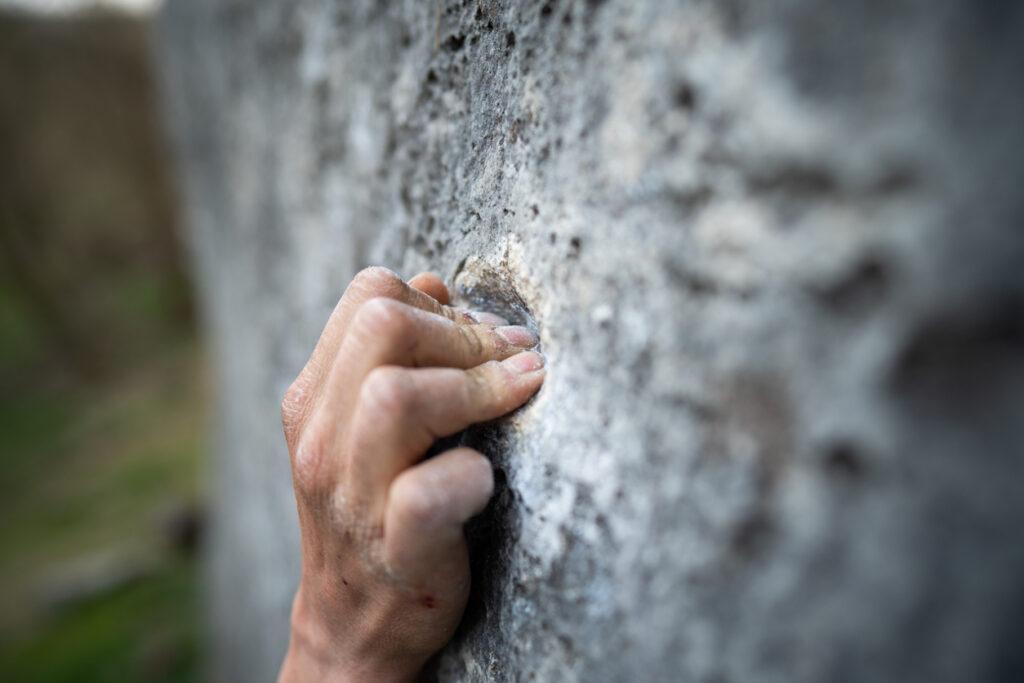
Looking for fun Spring activities to do to keep your body moving? What do you know about rock climbing? In the last couple years, rock climbing has become one of the fastest growing sports worldwide. With indoor rock-climbing facilities popping up across the country, it’s now easier than ever to access this exhilarating sport. Rock climbing not only sharpens your mental abilities and agility, but it also offers some extraordinary physical benefits such as increased strength, better flexibility, and improved balance.
If you’re already a climber, you’re likely to have experienced some of the aches and pains that go hand in hand with this sport. Most climbing injuries we see at Synergy Rehab are due to overuse. Overuse injuries often result from climbing in a manner that places excessive stress on specific muscles, tendons, and ligaments without allowing enough time for adequate recovery.
On the plus side, this means that you can prevent many of these climbing injuries through careful and educated training. Here is our guide with the 5 best tips for injury-free rock climbing this Spring!
Injury-Free Rock-Climbing Tips

1. Warm up properly
Before you roll your eyes at your local physiotherapist, we know this probably sounds like common sense. However, a good warm up is one of the most overlooked parts of a rock-climbing session by both new and experienced climbers.
Your warmup doesn’t have to eat into your climbing time massively. A good warmup must increase your body temperature, improve muscle elasticity, and mentally prepare you for your climbing session — all of which help reduce the risk of injury.
We recommend starting with a gentle aerobic exercise followed by a few minutes of specific dynamic exercises tailored to you. For instance, if you’re having trouble getting your hips close to the wall while climbing, some hip mobility exercises could be helpful. If your shoulder gives you trouble while climbing, complete some rotator cuff exercises.
After your warmup, start with a couple easy climbs first before diving into your main project of the day.
2. Start slow
With any new sport, doing too much too soon is a recipe for injury. If you are new to rock climbing or are just getting back into it after a hiatus, it is important to take a load management approach. All this means is carefully monitor the amount or intensity of your climbing so you can perform better for longer.
A great tactic to monitor the load being placed on your body while rock climbing is to start filling out a training journal. Documenting the length and intensity of your sessions will allow you to understand the strain and demands you are placing on your body. If you suffer an injury or are extra sore, you can see why this happened and what you should do differently.
As a rule of thumb, beginner rock climbers shouldn’t be climbing more than 3 days a week so you can have recovery days in between. Keep your sessions to an hour in length. We know how exciting something new can be but starting slow is vital to keeping your body healthy and happy. Once you have done this for a couple weeks pain-free, you can increase the session length and frequency of climbing days. Only change one of these variables at a time to ensure that steady progression!
3. Use static climbing technique
Generally, rock climbing styles can be categorized under two umbrellas — static or dynamic.
As a dynamic climber, you opt of quick, powerful movements to get through your climb. Dynamic climbing can be exhilarating and is a great way to send a problem/route quickly. However, this technique tends to place large strain on your muscles and joints when you’re rapidly jumping or catching yourself on a hold. Additionally, you are much more likely to fall while doing a dynamic movement compared to a static movement.
In contrast to the fast and large movements of dynamic climbing, is the measured nature of static climbing. If you are a static climber, you prefer slow and controlled movements to send a problem/route. There are pros and cons to both climbing approaches and a good rock climber should know when best to use either, however, static climbing technique is more effective to keep your body injury free.
4. Use different grips while rock climbing

One of the most common limiting factors to progressing as a climber is finger strength. When new climbers are annoyed to not be moving up grades faster, they tend to over rely on crimp grips.
A crimp grip involves grabbing the small edges of a rock with your fingers bent at the middle knuckle (half crimp). The thumb can be folded over the top of your index finger to enhance your pulling power (full crimp).
Although crimping is a powerful grip that certainly has its role in climbing, it places significant stress on the ligaments and tendons of your finger. This grip specifically strains your pulleys (finger flexor tendons) which help your muscles bend your fingers. As a result, finger injuries are much more common while crimping compared to open-hand grips. These injuries often take months to rehabilitate so it is best to avoid them altogether.
Old habits do die hard but practicing your other climbing grips on a hang board is a great way to avoid overuse injuries. Having an awareness and consciously practicing other grips, when possible, will help you become less reliant on crimping over time.
5. Listen to your body!
The most important tip of Synergy Rehab’s guide to injury free rock climbing? Listen to your body. If you are an avid climber or have decided to take up this Spring sport, you’re likely to develop an injury at some point. By listening to your body, you may be able to prevent a small tweak from spiralling into something bigger.
Be aware of the sensations you tend to ignore — a “twinge” in your finger, an ache in your elbow after an especially difficult climb, a general sense of fatigue that usually isn’t there. All of these feelings are signals from your body telling you an injury may be starting to develop or is on the precipice of happening. So, listen! Be proactive, adjust your training schedule, and see a physiotherapist near you for to maintain optimal health this spring!
Do you need treatment for rock climbing injuries?
If you are dealing with a rock-climbing related injury, it is important to get assessed by a sports physio professional. At Synergy Rehab, our team of highly trained physiotherapists, chiropractors, massage therapists, and more are here to work with you to achieve your goals. Not sure if physiotherapy is the right choice for you? Call us today for an easy phone consultation!







